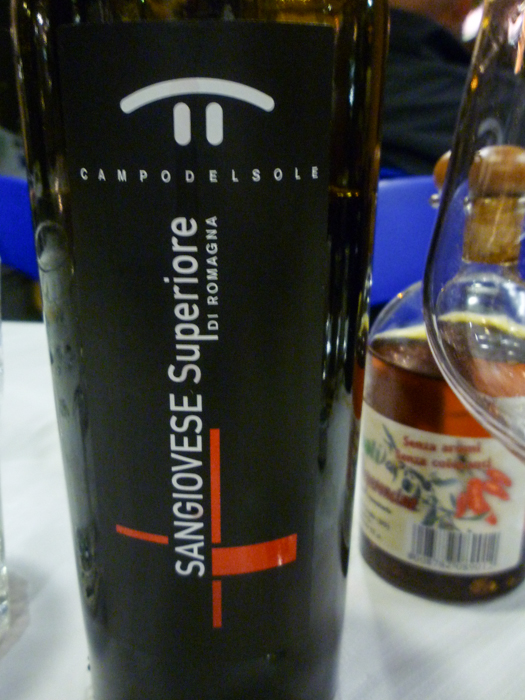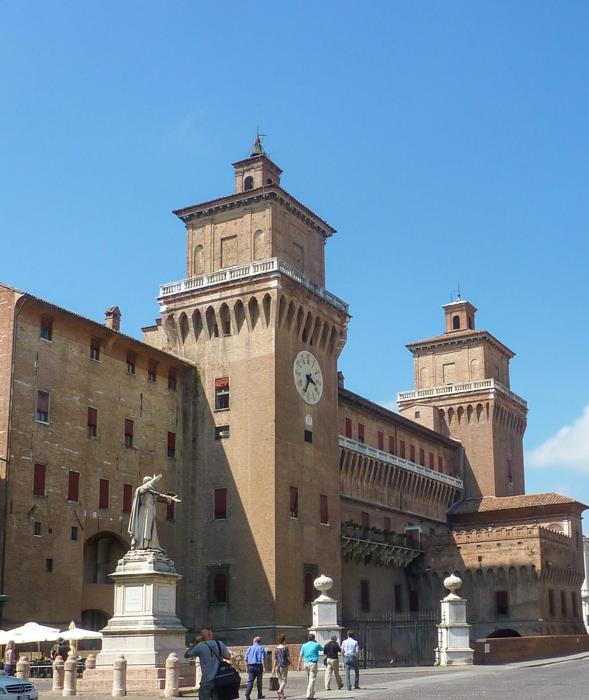 Our Gourmet Venice to Florence Walking Adventure traverses Northeast Italy, exploring the historical sights, regional kitchens and local wines of Venice, Vicenza, Bologna and Florence. One stop on this journey that surprises our guests, as it is not that well-known to tourists, is the city of Ferrara.
Our Gourmet Venice to Florence Walking Adventure traverses Northeast Italy, exploring the historical sights, regional kitchens and local wines of Venice, Vicenza, Bologna and Florence. One stop on this journey that surprises our guests, as it is not that well-known to tourists, is the city of Ferrara.
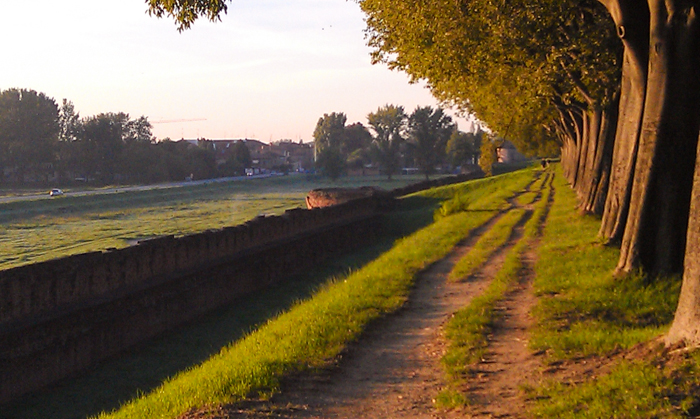 Ferrara is the capital of the province of Ferrara, in the region of Emilia-Romagna, about 50 km northeast of Bologna. The center of town is dominated by the Castello Estense, a brick castle complete with moat, commissioned by Nicholas D’Este in 1385. The Este family ruled Ferrara for close to 400 hundred years, and during their reign Ferrara became a center for art and culture, and was one of the first examples of Renaissance city planning earning today its status as a UNESCO World Heritage site. The notorious Lucretia Borgia was married to the Duke of Ferrara, Alfonso I, and spent most of her life here in Ferrara, and is buried here as well.
Ferrara is the capital of the province of Ferrara, in the region of Emilia-Romagna, about 50 km northeast of Bologna. The center of town is dominated by the Castello Estense, a brick castle complete with moat, commissioned by Nicholas D’Este in 1385. The Este family ruled Ferrara for close to 400 hundred years, and during their reign Ferrara became a center for art and culture, and was one of the first examples of Renaissance city planning earning today its status as a UNESCO World Heritage site. The notorious Lucretia Borgia was married to the Duke of Ferrara, Alfonso I, and spent most of her life here in Ferrara, and is buried here as well.
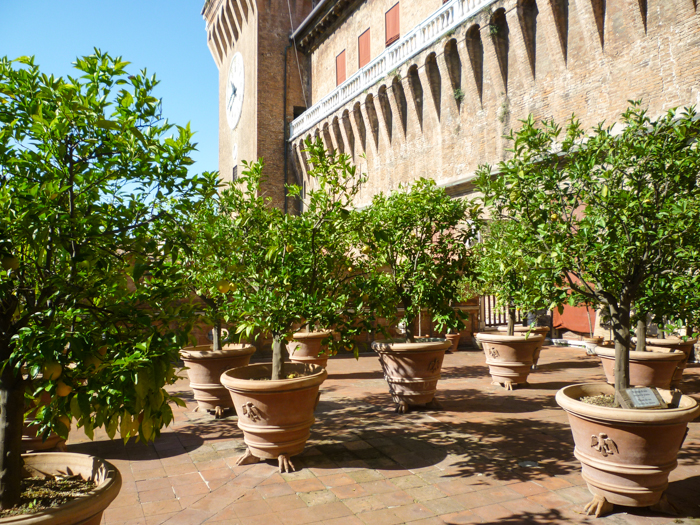
Visitors to the Castello have the opportunity to experience the old prisons, the Tower of the Lions, the terrace orangerie which supposedly inspired the same at Versailles and the ducal kitchens, where a nice exhibit describes the elaborate feasts that were put on by the ruling family. The Este’s were renowned for their elaborate banquets which feature numerous courses, elegant table decorations, and musical and theatrical entertainment, from magicians to pastry castles, pies filled with live birds, sucking pigs, and decorative marzipan figures and sculpted sugar table ornaments.
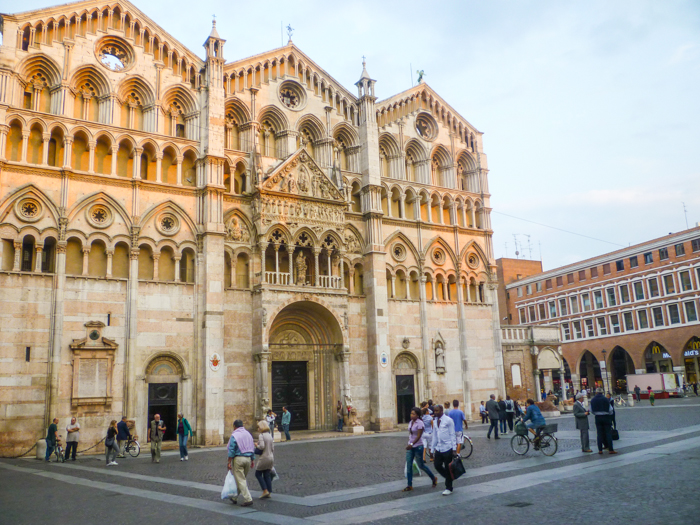 The center of Ferrara is dominated by Romanesque façade of the Cathedral, one of the landmarks of the city. “The Martyrdom of St. Lawrence” by Guercino is among the most important works housed inside the cathedral. The surrounding busy marketplace is the center of activity in this lively city.
The center of Ferrara is dominated by Romanesque façade of the Cathedral, one of the landmarks of the city. “The Martyrdom of St. Lawrence” by Guercino is among the most important works housed inside the cathedral. The surrounding busy marketplace is the center of activity in this lively city.
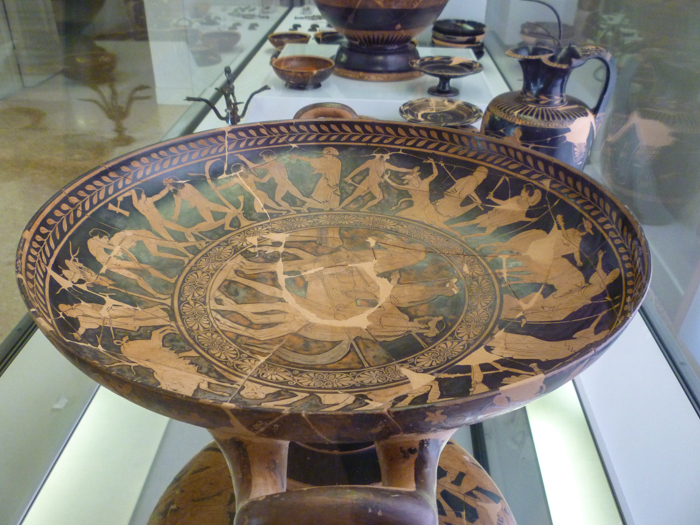 Another spot worth a visit is the Museo Archeologico Nazionale di Ferrara, located in Palazzo Costabili. A very interesting exhibit is dedicated to Spina, an Etruscan port that flourished between the 6th and 3rd centuries BC. Spina was the principal port in northern Adriatic Sea between the late Archaic and Hellenistic periods, and one of the cornerstones of Etruscan presence in northern Italy.
Another spot worth a visit is the Museo Archeologico Nazionale di Ferrara, located in Palazzo Costabili. A very interesting exhibit is dedicated to Spina, an Etruscan port that flourished between the 6th and 3rd centuries BC. Spina was the principal port in northern Adriatic Sea between the late Archaic and Hellenistic periods, and one of the cornerstones of Etruscan presence in northern Italy.
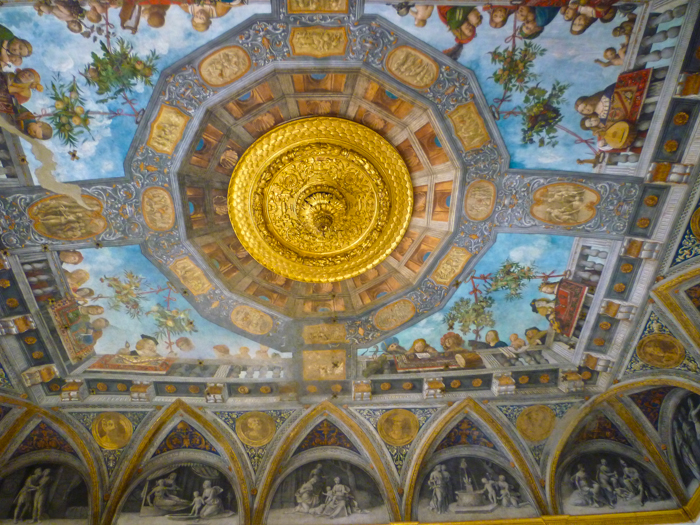 Ferrara is surrounded by some of the best preserved ancient city walls in Italy, dating from the 15th and 16th century. Today, 9 km of cycling and walking paths follow these walls, where you will often find the residents of this “Citta delle Biciclette” enjoying the outdoors along these quiet tree-lined paths.
Ferrara is surrounded by some of the best preserved ancient city walls in Italy, dating from the 15th and 16th century. Today, 9 km of cycling and walking paths follow these walls, where you will often find the residents of this “Citta delle Biciclette” enjoying the outdoors along these quiet tree-lined paths.
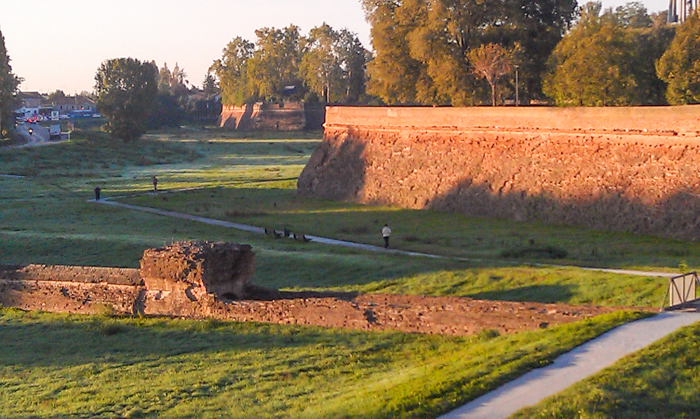
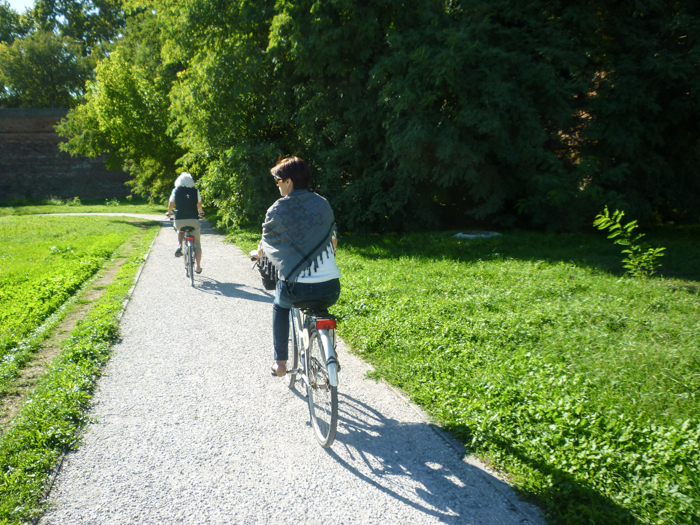 After a nice late afternoon bike ride, we head out for dinner to discover some of the favorite local dishes. The undisputed signature first pasta course in Ferrara is cappellacci di zucca, a stuffed pasta with a filling of winter squash or pumpkin, Parmigiano-Reggiano and nutmeg. It is served two ways, either with a butter and sage sauce, or, interestingly enough, a meat ragu. Cappellacci di Zucca Ferraresi are mentioned in recipe books from the Renaissance, when these were prepared for the Este family. A great place to find both the Cappellaci as well as another Ferrarese specialty, Salama da sugo, is Trattoria da Noemi.
After a nice late afternoon bike ride, we head out for dinner to discover some of the favorite local dishes. The undisputed signature first pasta course in Ferrara is cappellacci di zucca, a stuffed pasta with a filling of winter squash or pumpkin, Parmigiano-Reggiano and nutmeg. It is served two ways, either with a butter and sage sauce, or, interestingly enough, a meat ragu. Cappellacci di Zucca Ferraresi are mentioned in recipe books from the Renaissance, when these were prepared for the Este family. A great place to find both the Cappellaci as well as another Ferrarese specialty, Salama da sugo, is Trattoria da Noemi.
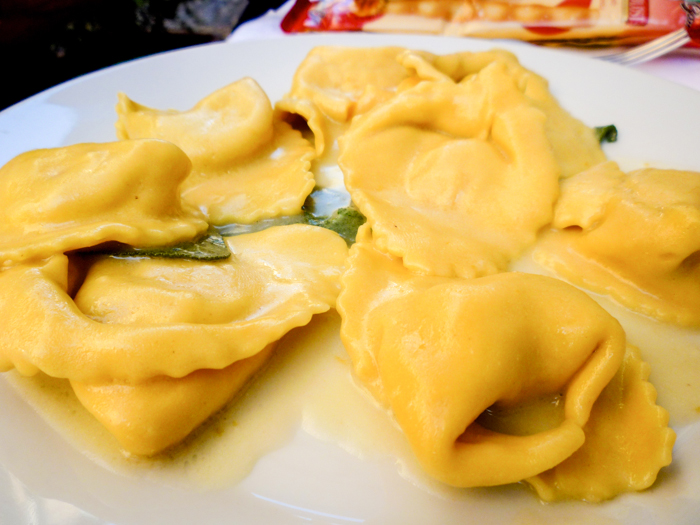 Salama da Sugo is a locally produced pork sausage that is prepared for eating in a very specific way. The sausage is first soaked in warm water overnight in order to soften the outer crust, which is then brushed to clean it. Next, it is wrapped in a cloth and immersed in a pot of water, hanging from a wooden stick so it does not touch the bottom. The water is brought to a low boil, and the sausage simmers here for over four hours. Once cooked, you carefully break the casing and spoon the warm meat over mashed potatoes or polenta.
Salama da Sugo is a locally produced pork sausage that is prepared for eating in a very specific way. The sausage is first soaked in warm water overnight in order to soften the outer crust, which is then brushed to clean it. Next, it is wrapped in a cloth and immersed in a pot of water, hanging from a wooden stick so it does not touch the bottom. The water is brought to a low boil, and the sausage simmers here for over four hours. Once cooked, you carefully break the casing and spoon the warm meat over mashed potatoes or polenta.
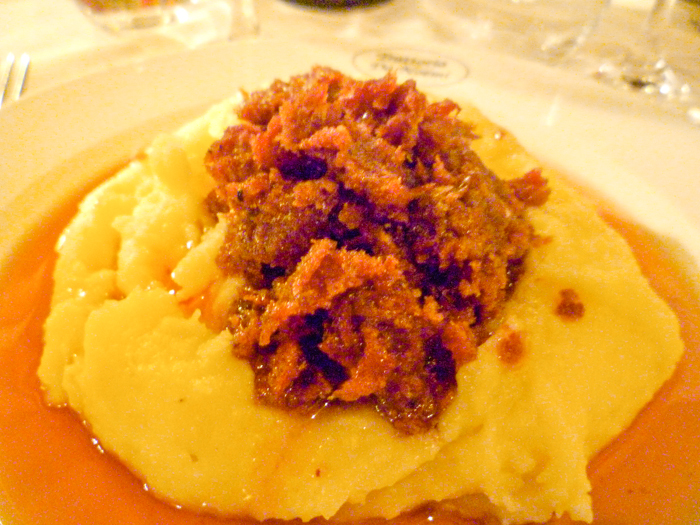 A wonderful dining destination in the heart of the medieval district of Ferrara is the Jewish Ghetto, where the Jewish community of this city was segregated from 1627 to the Unification of Italy (1848 – 1870). Sights here include quaint terracotta houses, the Jewish school, and the Synagogue in Via Mazzini, site of the Jewish Museum. My favorite restaurant here is the Osteria del Ghetto, where you can sample traditional dishes of the community.
A wonderful dining destination in the heart of the medieval district of Ferrara is the Jewish Ghetto, where the Jewish community of this city was segregated from 1627 to the Unification of Italy (1848 – 1870). Sights here include quaint terracotta houses, the Jewish school, and the Synagogue in Via Mazzini, site of the Jewish Museum. My favorite restaurant here is the Osteria del Ghetto, where you can sample traditional dishes of the community.
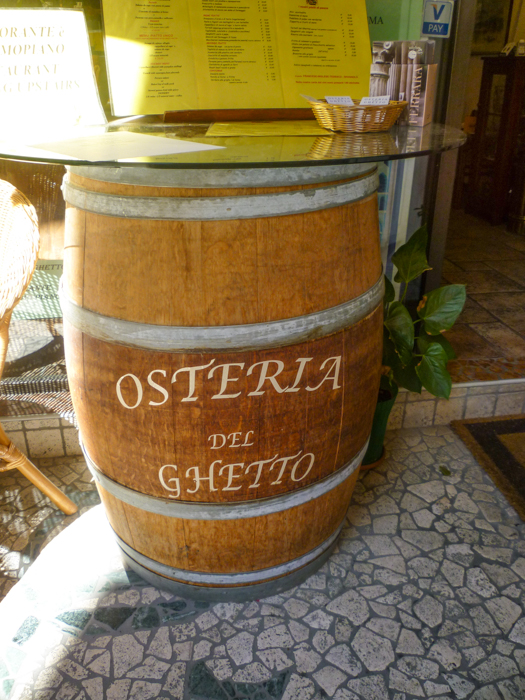 The breadbasket will arrive filled with bread with a very unusual shape, this is coppia Ferrarese (ciupeta), the local specialty bread. This bread dates back over 800 years or more, when rules instructed bakers to produce bread in the shape of scrolls (orletti). Today’s version is a sourdough bread, made from two rolled up ribbons of dough which are united together in the center, leaving the four twisted ends sticking out like a four pointed star. Coppia Ferrarese enjoys PGI (Protected Geographical Identification) recognition by the European Community.
The breadbasket will arrive filled with bread with a very unusual shape, this is coppia Ferrarese (ciupeta), the local specialty bread. This bread dates back over 800 years or more, when rules instructed bakers to produce bread in the shape of scrolls (orletti). Today’s version is a sourdough bread, made from two rolled up ribbons of dough which are united together in the center, leaving the four twisted ends sticking out like a four pointed star. Coppia Ferrarese enjoys PGI (Protected Geographical Identification) recognition by the European Community.
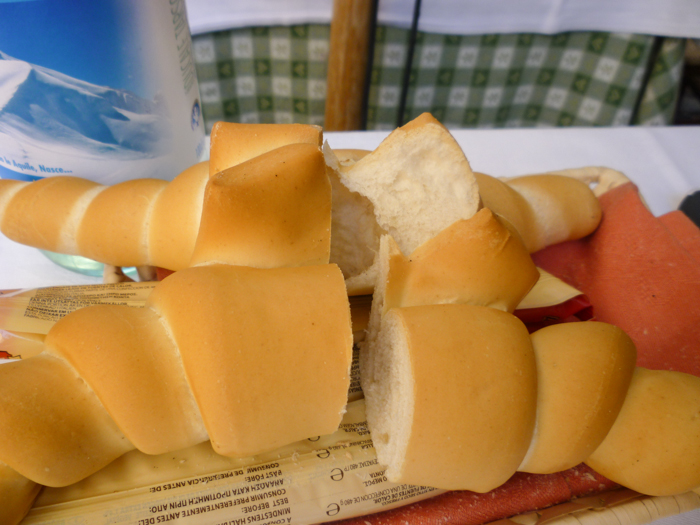 Due to religious restrictions, you would not find pork dishes here, instead, poultry based dishes were common. Here, try the Chicken Braised in Pears, spiced with cinnamon, featuring the local pears found in the orchards surrounding Ferrara.
Due to religious restrictions, you would not find pork dishes here, instead, poultry based dishes were common. Here, try the Chicken Braised in Pears, spiced with cinnamon, featuring the local pears found in the orchards surrounding Ferrara.
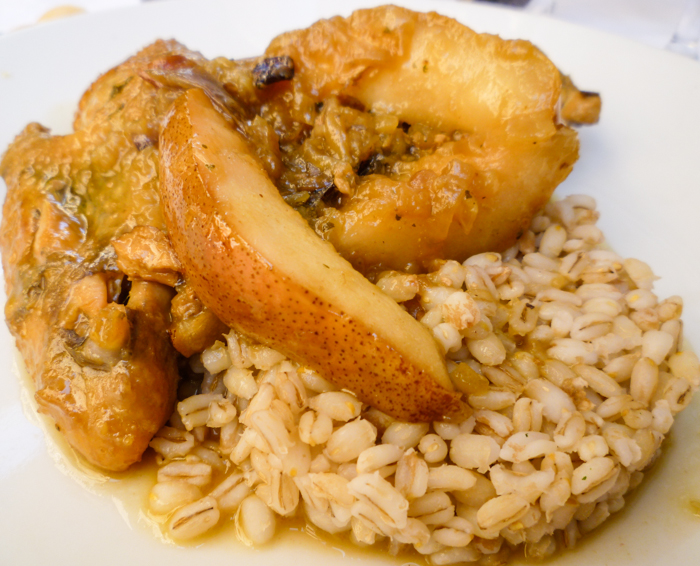 When in Ferrara, I recommend the local wines to accompany your meals. The region of Emilia-Romagna produces quite a bit of wine, but not a lot is exported. You should try a glass of Lambrusco, and re-discover this wine you have probably tried early in your wine drinking career. Lambrusco is the name of both a family of red grapes, and the sparkling wines produced with them. There are many varieties of the grape, over 60 have been identified throughout Italy. The best to try: Lambrusco Salamino, Sorbara, and Grasparossa.
When in Ferrara, I recommend the local wines to accompany your meals. The region of Emilia-Romagna produces quite a bit of wine, but not a lot is exported. You should try a glass of Lambrusco, and re-discover this wine you have probably tried early in your wine drinking career. Lambrusco is the name of both a family of red grapes, and the sparkling wines produced with them. There are many varieties of the grape, over 60 have been identified throughout Italy. The best to try: Lambrusco Salamino, Sorbara, and Grasparossa.
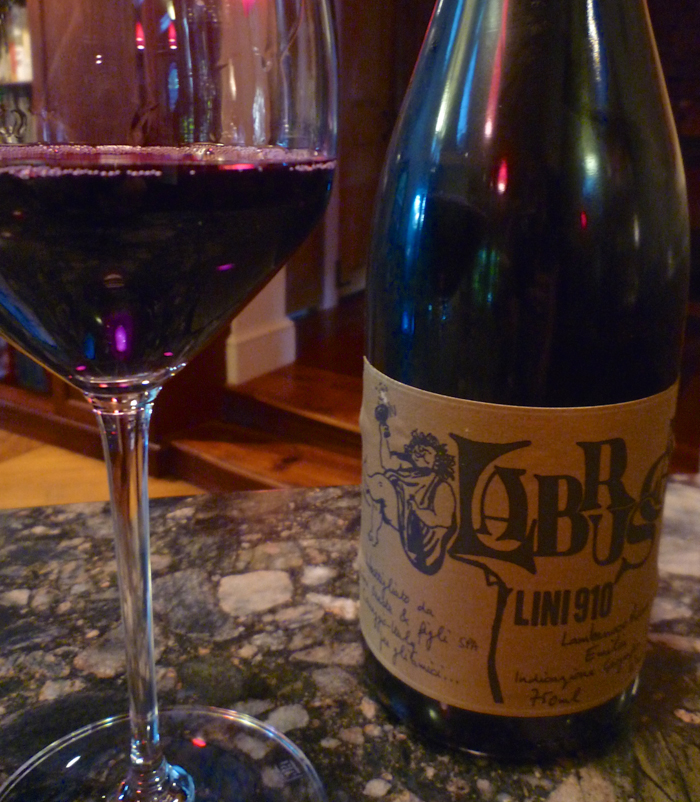 For a white, the local favorite is a Pignoletto. Here in Emilia-Romagna the residents proudly use this name, but DNA analysis has shown that Pignoletto is actually the Grechetto grape grown in Umbria. The best are lively and crisp, and you can find both still and sparkling versions. Finally, the local red wines are made from the Sangiovese grape, the most widely planted grape in Italy, You have no doubt enjoyed Sangiovese based wines before, in your glass of Chianti. Spend your evening in Ferrara enjoying a glass on the Piazza della Cattedrale, watching the sunset reflecting on the historic facade.
For a white, the local favorite is a Pignoletto. Here in Emilia-Romagna the residents proudly use this name, but DNA analysis has shown that Pignoletto is actually the Grechetto grape grown in Umbria. The best are lively and crisp, and you can find both still and sparkling versions. Finally, the local red wines are made from the Sangiovese grape, the most widely planted grape in Italy, You have no doubt enjoyed Sangiovese based wines before, in your glass of Chianti. Spend your evening in Ferrara enjoying a glass on the Piazza della Cattedrale, watching the sunset reflecting on the historic facade.
